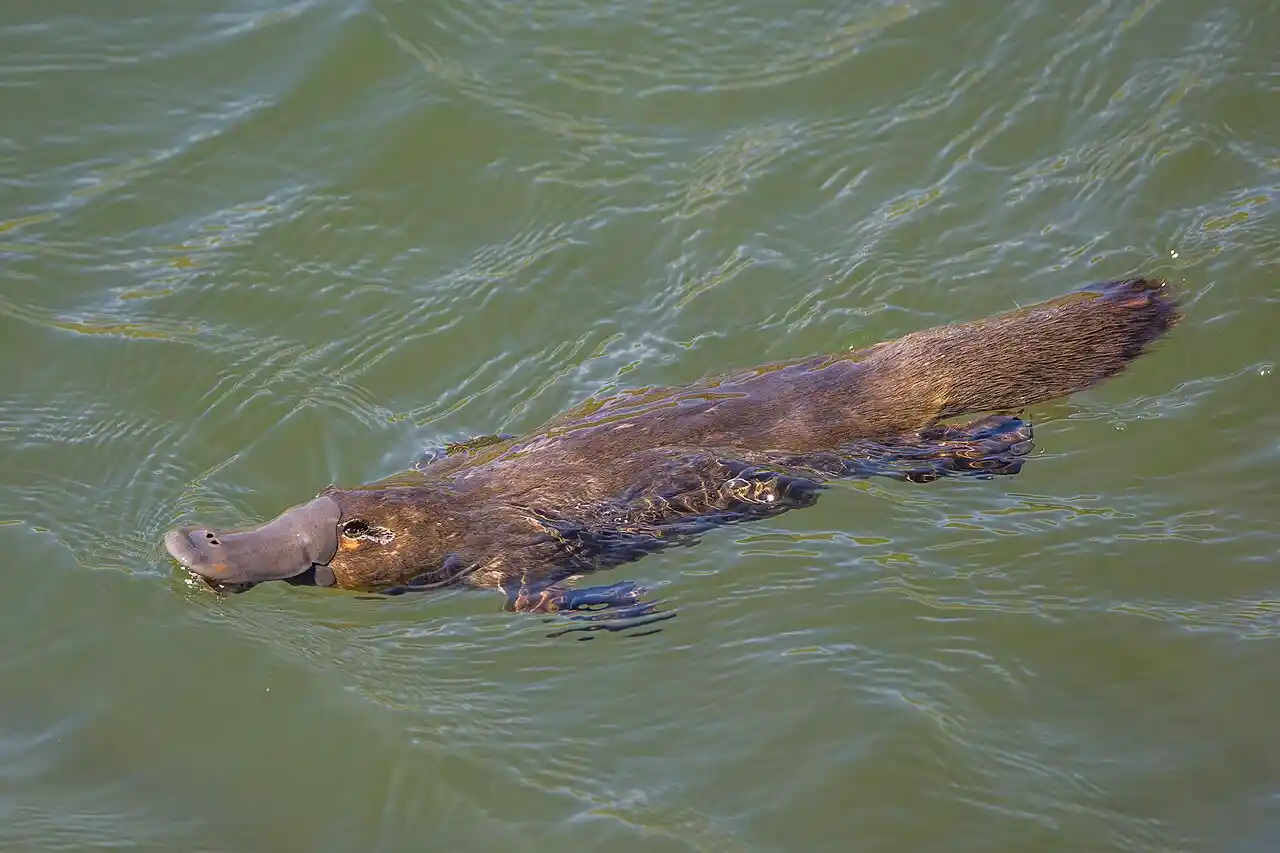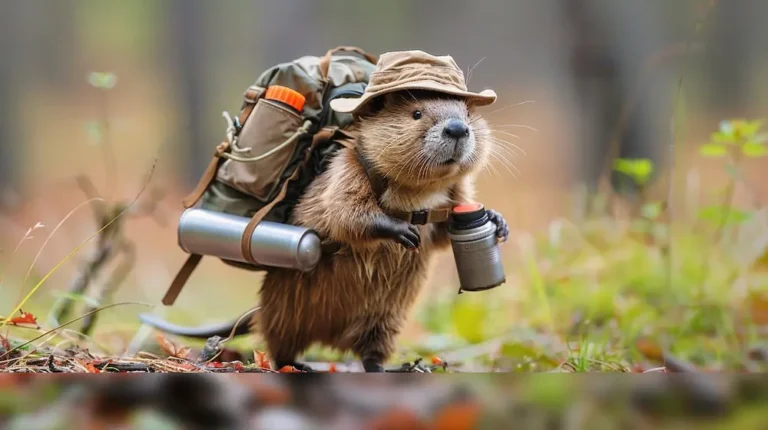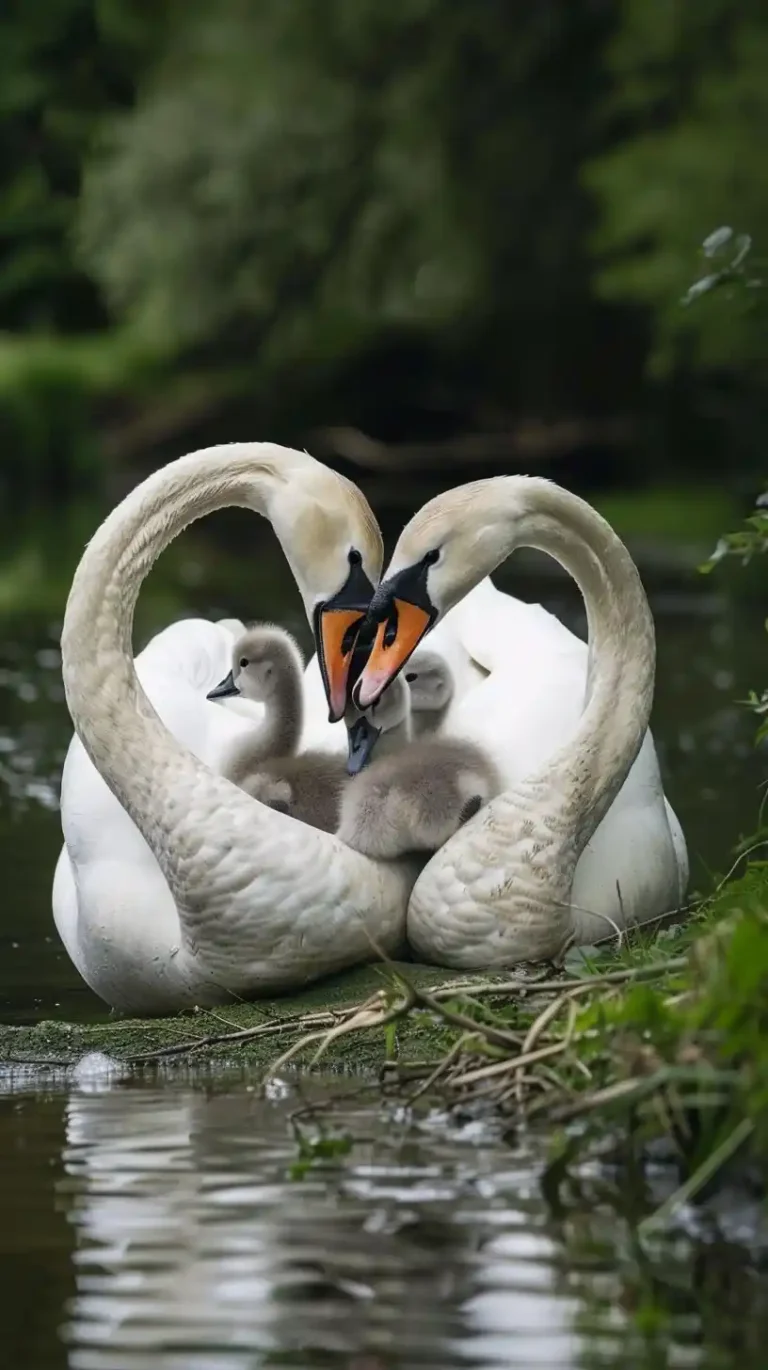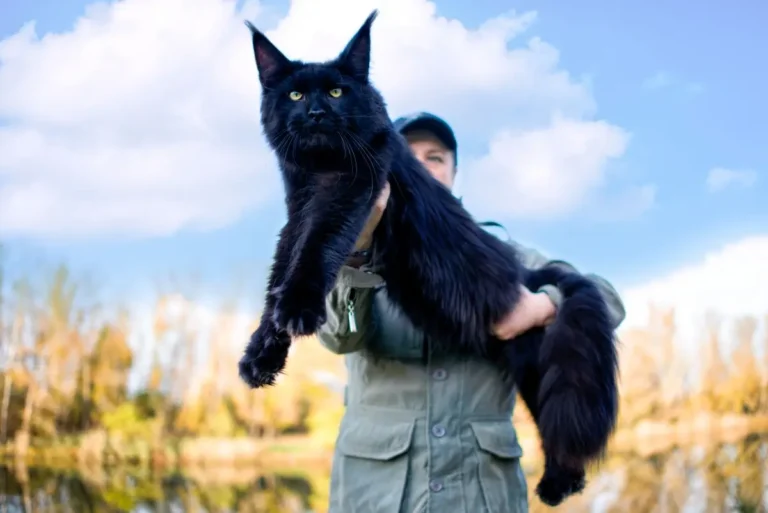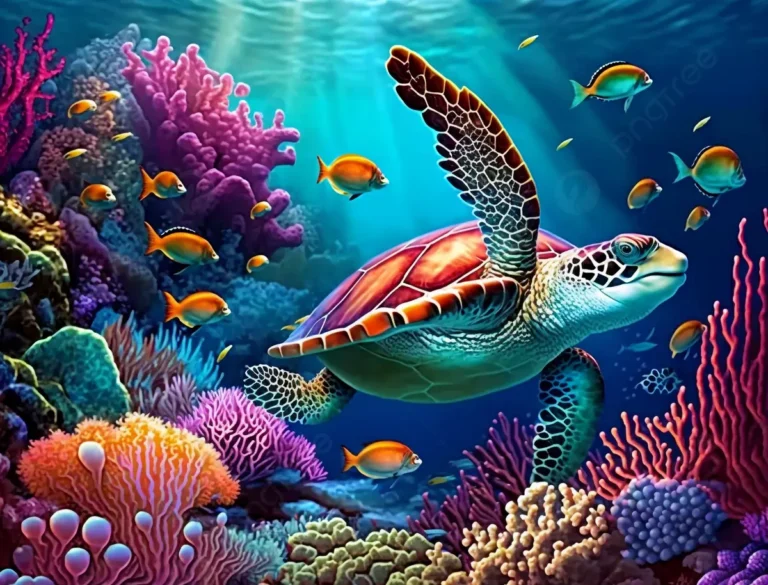🦆 Dive into the Wonders of the Duck-Billed Platypus! 🦆 Ever marveled at the quirky and unique duck-billed platypus? This extraordinary mammal is a fascinating blend of features that make it one of nature’s most unusual creatures.
From its egg-laying habits to its remarkable sensory skills, discover a treasure trove of fun and surprising facts about the platypus that will make you appreciate this one-of-a-kind animal even more! 🌟💧🦦
Interested in other animal’s facts, check out our curated list for more fun facts about animals.
Introduction; The Duck Billed Platypus
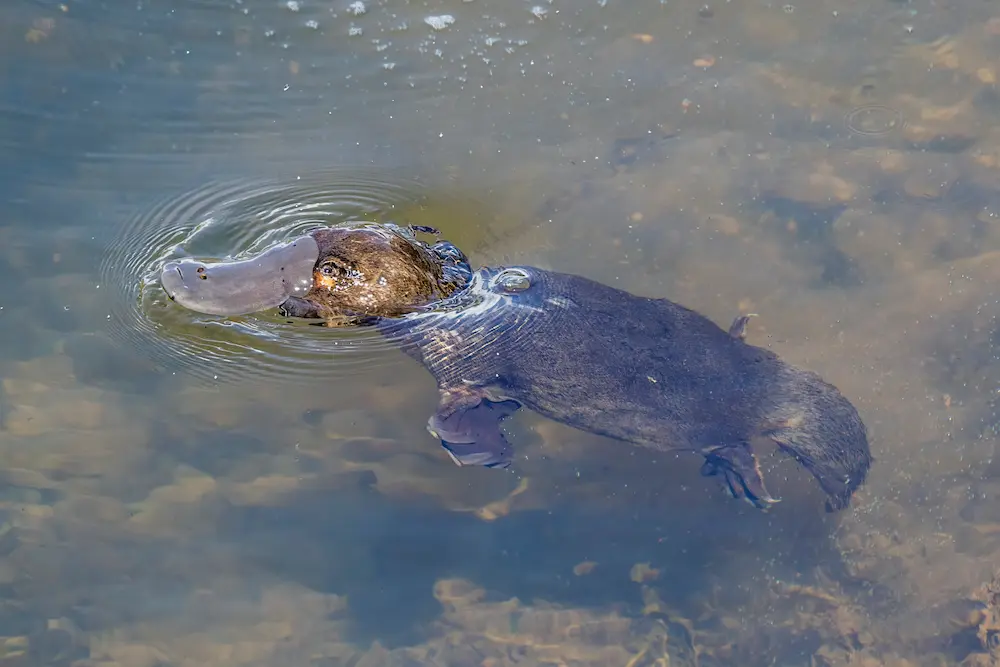
The duck-billed platypus is a unique semi-aquatic egg-laying mammal found only in eastern Australia, including the island state of Tasmania.
It is one of only a few venomous mammals, with males having a spur on their hind legs that delivers a potent venom.
Habitat
Platypuses inhabit rivers, lagoons, and streams, preferring areas with steep banks that contain roots, overhanging vegetation, reeds, and logs.
They are found on the Eastern and Southeastern coasts of Australia as well as Tasmania, Flinders, and King Islands.
There is also a small introduced population on Kangaroo Island off South Australia.
Species
The platypus is one of the five extant species of monotremes, which also include four species of echidna.
Monotremes are unique among mammals in that they retain the ancestral characteristic of egg laying.
Physical Characteristics
Platypuses have a flattened, streamlined body, webbed feet for swimming, and a distinctive duck-like bill that is sensitive to electrical currents, allowing them to detect prey in murky water.
Males are generally larger than females and have two venom glands attached to spurs on their hind legs.
Females have mammary glands but no nipples.
Diet
Platypuses are carnivorous, feeding on annelid worms, freshwater shrimp, insect larvae, and freshwater crayfish.
They forage by digging in the riverbed with their snout or catching prey while swimming.
Behavior
Platypuses are nocturnal and crepuscular, but individuals can also be active during the day, particularly when foraging.
They are solitary animals and build burrows along riverbanks for shelter.
Conservation Status
The largest threat to the platypus is habitat loss due to land clearance and water pollution.
Predators include snakes, goannas, water rats, foxes, and humans.
The IUCN Red List currently classifies the platypus as Near Threatened, with decreasing population numbers.
50 Fun Facts About Duck-Billed Platypus
1. The platypus is a monotreme.
It is one of only five extant species of monotremes, which are egg-laying mammals. The other four species are echidnas. [Britannica]
2. The scientific name of the platypus is Ornithorhynchus anatinus.
This name translates to “bird snout” in Greek and Latin, reflecting its unique bill. [Wikipedia]
3. Platypuses are native to Australia.
They are found in rivers, lakes, and streams across eastern Australia and Tasmania. [National Geographic]
4. They have a duck-like bill.
The bill of the platypus is soft and pliable, allowing it to forage for food underwater. [FactRetriever]
5. Male platypuses are venomous.
They possess a spur on their hind legs that can deliver a painful venom, particularly during the breeding season. [National Geographic]
6. Platypuses are excellent swimmers.
They can swim using their webbed feet, which retract to reveal claws when they are on land. [Scout Life]
7. They are nocturnal animals.
Platypuses are primarily active during the night and sleep during the day. [FactRetriever]
8. Platypuses can detect electrical signals.
Their bill is equipped with electroreceptors that allow them to sense the electrical impulses of their prey while swimming. [Britannica]
9. They are bottom feeders.
Platypuses forage for food by scooping up insects, larvae, and crustaceans from the riverbed. [National Geographic]
10. Platypuses do not have teeth.
Instead, they have flat pads in their mouths that help them grind food. [FactRetriever]
11. They lay eggs.
Female platypuses lay one to three eggs at a time, which they incubate in a burrow. [National Geographic]
12. Platypus cubs are born blind and hairless.
Newly hatched platypuses are tiny and rely on their mother for warmth and nourishment. [FactRetriever]
13. The platypus has a unique method of feeding.
They store food in cheek pouches while foraging and then surface to chew and swallow. [Britannica]
14. They have a low body temperature.
The platypus has a body temperature of about 32°C (90°F), which is lower than most mammals. [Britannica]
15. Platypuses are solitary animals.
They generally prefer to live alone, except during mating season or when raising young. [National Geographic]
16. They can live for over 20 years.
In captivity, platypuses can live up to 20 years, while their lifespan in the wild is typically shorter. [FactRetriever]
17. The platypus has waterproof fur.
Their dense fur keeps them warm and dry while swimming, even in cold water. [National Geographic]
18. They are shy and elusive.
Platypuses are generally secretive and spend much of their time hidden in burrows or underwater. [Britannica]
19. The platypus is a symbol of Australian wildlife.
It is one of the most iconic animals in Australia and is often associated with the country’s unique biodiversity. [WWF]
20. They have a flattened, streamlined body.
This body shape helps them glide through the water efficiently. [FactRetriever]
21. Platypuses can close their ears and nostrils while swimming.
This adaptation prevents water from entering their ears and nose when they dive underwater. [Scout Life]
22. They are known to forage for up to 12 hours a day.
Platypuses spend a significant amount of time hunting for food to meet their energy needs. [National Geographic]
23. The platypus has a unique reproductive system.
As a monotreme, it has a cloaca, a single opening for excretion and reproduction, which is a primitive feature among mammals. [Wikipedia]
24. They are part of the ancient lineage of mammals.
Platypuses have existed for over 100 million years, making them one of the oldest living species of mammals. [FactRetriever]
25. The platypus is sometimes called the “duck-billed platypus.”
This name reflects its distinctive bill, which resembles that of a duck. [Britannica]
26. They have a unique way of walking on land.
While on land, platypuses walk on their knuckles to prevent their webbed feet from getting in the way. [FactRetriever]
27. The platypus has been featured in popular culture.
It is well-known as Perry the Platypus from the Disney Channel show Phineas and Ferb. [FactRetriever]
28. They are sensitive to environmental changes.
Platypuses are indicators of water quality and ecosystem health, as they are affected by pollution and habitat loss. [WWF]
29. The platypus has a unique hunting strategy.
They often use a technique called “still hunting,” where they remain motionless and wait for prey to approach. [National Geographic]
30. They have a strong sense of touch.
The bill of the platypus is covered in sensitive skin that allows it to detect vibrations and movements in the water. [Britannica]
31. Platypuses have a low metabolic rate.
This adaptation helps them survive on a diet of low-energy food sources like insects and larvae. [FactRetriever]
32. They have been known to swim in saltwater.
While they primarily inhabit freshwater, platypuses can occasionally be found in coastal areas. [National Geographic]
33. The platypus is a protected species.
Due to habitat loss and other threats, they are protected under Australian law. [WWF]
34. They have a unique courtship ritual.
Mating typically occurs in the water, where males and females engage in playful behaviors. [FactRetriever]
35. The platypus has been studied for its evolutionary significance.
Researchers study the platypus to understand the evolution of mammals and the characteristics of monotremes. [Britannica]
36. They have a distinctive tail.
The platypus has a broad, flat tail that helps with swimming and storing fat reserves. [National Geographic]
37. The platypus has a unique method of thermoregulation.
Despite their low body temperature, they can maintain a stable temperature even in cold water. [Britannica]
38. They are known to be good divers.
Platypuses can dive to depths of about 3 meters (10 feet) while searching for food. [FactRetriever]
39. The platypus has a specialized diet.
They primarily feed on aquatic invertebrates, such as crustaceans and insect larvae. [National Geographic]
40. They are vulnerable to habitat destruction.
Urban development, pollution, and climate change threaten their natural habitats. [WWF]
41. The platypus has a unique jaw structure.
They lack teeth and instead have hard pads in their mouths to help grind food. [Britannica]
42. They are excellent at navigating underwater.
Platypuses can close their eyes, ears, and nostrils while submerged, relying on their bill to find food. [National Geographic]
43. The platypus has a unique evolutionary history.
It is believed to have diverged from other mammals over 200 million years ago. [FactRetriever]
44. They have a unique social structure.
Platypuses are generally solitary animals, but they may tolerate others in areas with abundant food. [WWF]
45. The platypus is an important part of the ecosystem.
They help control insect populations and contribute to the health of freshwater habitats. [National Geographic]
46. They have a unique way of storing food.
Platypuses store food in cheek pouches while foraging, allowing them to eat at the surface. [Britannica]
47. The platypus has a distinctive coloration.
Their fur is typically dark brown on the back and lighter on the underside, providing camouflage in their natural habitat. [FactRetriever]
48. They are known for their playful nature.
Platypuses often engage in playful activities, especially when they are young, which helps them develop social skills. [WWF]
49. The platypus has been studied for its venom.
Research on platypus venom has potential implications for pain management in humans. [National Geographic]
50. They are a symbol of Australian wildlife.
The platypus is an iconic representation of Australia’s unique biodiversity and is often featured in conservation efforts. [WWF]These fun facts about the duck-billed platypus highlight its unique adaptations, behaviors, and the challenges it faces in the wild. Each fact is supported by reputable sources, emphasizing the importance of platypuses in our ecosystem and the need for conservation efforts.
Share
Rewrite
